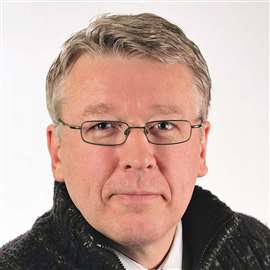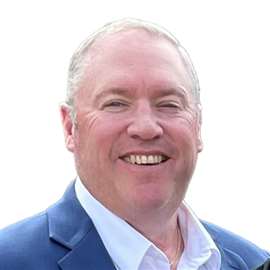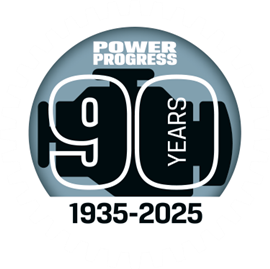Read this article in Français Deutsch Italiano Português Español
Engine Yearbook reveals industry facts, trends
17 June 2025
For decades, readers have come to depend upon the annual Power Progress Engine Yearbook to provide — in only a handful of pages — key information and insights about the engines that power vehicles and equipment. The engine makers themselves have grown accustomed to Power Progress’ annual request for updated information, which most graciously supply along with the latest news about current and future products and technologies. Yearbook editors also comb through the past year’s coverage and engine manufacturers’ websites to ensure the data and news are as comprehensive as possible.
As the industry has seen dramatic changes over the years, with new fuels and emissions technologies as well as the global drive to net-zero emissions, interesting trends can be found in even a small sampling of current and past Engine Yearbook editions. Here are some key points of interest from the current Engine Yearbook, which appears in the June issue of Power Progress, as well as some trends from previous years.
By the Numbers
The 2025 Engine Yearbook comprises 40 engine makers. Of them, 27 are located in the United States, 11 are in Europe and two — Daedong and HD Hyundai Infracore — are in South Korea.
The Yearbook categorizes engines into four fuel types: diesel, gaseous and gasoline as well as “alternative fuel,” which is used to describe any unique or atypical fuel solution.
By fuel type, 32 engine builders offer diesel, which would seem to confirm that these engines are not going away anytime soon. Twenty-two companies make gaseous-fueled engines, while just 10 provide gasoline engines. Only three — MAN Energy Solutions (which was recently rebranded as Everllence), Wabtec and Wärtsilä — provide alternative-fueled engines. In each case, they are dual-fuel engines.
Obviously, this count adds up to more than 40, as several engine makers offer more than one fuel type. There are 16 engine manufacturers delivering both diesel and gaseous-fueled engines, with only five providing both diesel and gasoline engines. Incidentally, those same five engine makers are responsible for providing gaseous-fueled engines, as well, making them the only ones that offer ranges of engines for all three of the typical fuel offerings.
None of the engine manufacturers in this year’s Engine Yearbook provides engines in all four categories, including alternative fuels.
Diesel Ranking Challenges
The Engine Yearbook supplies data about the horsepower ranges each engine maker offers, broken out by fuel type. Ranking manufacturers by the range of power they offer should be a perfunctory task. However, it’s not so simple — at least for diesel engine makers.
That’s because many manufacturers supply engines for a variety of applications, from off-highway mobile equipment to power generation to locomotives to marine vessels. The Engine Yearbook doesn’t typically differentiate engines by application unless the manufacturer specifically requests it. Scania, for instance, chose to separate its industrial diesel range from those used in marine applications. Volvo Penta took a similar approach, adding even more clarification when it specified the range of diesels it supplies for power generation purposes.
However, some engine makers serve only one vehicle or equipment sector. For example, Everllence makes diesel engines specifically for marine applications. Because such engines are often significantly more powerful than those typically used in off-highway equipment, they can skew any ranking of manufacturers by engine horsepower range.
For instance, looking at the data from 2025 for all engine manufacturers and all applications, the top five diesel engine suppliers by horsepower range are as follows:
The first three suppliers in that list, however, are focused exclusively on marine applications, with Everllence clearly offering a far greater range of horsepower than any other engine manufacturer. The difference in power range between Everllence and Wärtsilä is almost 83,000 hp, whereas the delta between Everllence and no. 5 Caterpillar is more than 101,000 hp.
While not offering as large a power range as the first three, Rolls-Royce/mtu also addresses marine applications, although many of its engines are also designed for large stationary gen-sets.
Removing those first four companies from the top five reveals a new ranking of engine companies: Caterpillar, Liebherr, Cummins, Wabtec and Power Solutions International.
However, given that Wabtec primarily supplies engines for locomotives — another outsized application — choosing to remove it in favor of a typical off-highway equipment engine supplier would add Perkins to the no. 5 position.
The top 10 diesel engine makers ranked by range of power offered across all applications are as follows:
Gaseous and Gasoline
Because Everllence also offers gaseous-fueled engines in power ranges similar to its diesel line, the company dominates the top spot in a ranking of those engines. Everllence makes gaseous-fueled engines from 4,104 to 110,554 hp, for a range of 106,450 hp.
Ranking gasoline engine power ranges is a far easier exercise, as there are only 10 such engine makers in the 2025 Engine Yearbook. Power Solutions International tops the list with a power range of 261 hp, while Zenith Power Products at the other end offers a 20-hp range of engines.
About Alternative Fuels
As mentioned earlier, only three engine makers said they offered alternative-fuel engines — Everllence, Wabtec and Wärtsilä. However, that should not be taken to mean no other manufacturers are producing or planning to produce such engines. Many choose to report only those currently in serial production. Others could still be evaluating their approach to alternative fuels. Finally, since certain alternative fuels, such as HVO and biodiesel, can be used with conventional diesel engines without modification, many engine makers are already adopting alternative fuel sources within their existing diesel portfolio.
Changes Since 2021
Looking back at four additional issues of Engine Yearbooks, it’s easy to see that certain things have changed.
First, the number of engine makers listed has grown. In 2021, the Yearbook featured 30 companies versus the 40 that are in the 2025 edition. Such growth represents both changes in the marketplace as well as the availability of information for inclusion in the Yearbook.
However, there has also been remarkable consistency in the listing. While accounting for name changes for some companies, there are 28 engine makers that have appeared in every Yearbook since 2021. The vast majority of them — 23 companies — make diesel engines. Seventeen of them produce gaseous-fueled engines, and 14 make both.
The 2025 Engine Yearbook saw one newcomer: K5 Power of Menomonee Falls, Wis. The company distributes gaseous-fueled engines from 35-44 hp made by Cooper Corp. Pvt. Ltd., which is based in India.
Over the past five years, there have also been a couple of one-hit wonders. Siemens Energy Engines made its only appearance in 2022, after which the company was acquired by Mutares SE & Co. KGaA and began operating as Guascor Energy. Guascor, meanwhile, was only featured in the Yearbook in 2023.
POWER SOURCING GUIDE
The trusted reference and buyer’s guide for 83 years
The original “desktop search engine,” guiding nearly 10,000 users in more than 90 countries it is the primary reference for specifications and details on all the components that go into engine systems.
Visit Now
STAY CONNECTED




Receive the information you need when you need it through our world-leading magazines, newsletters and daily briefings.
CONNECT WITH THE TEAM













